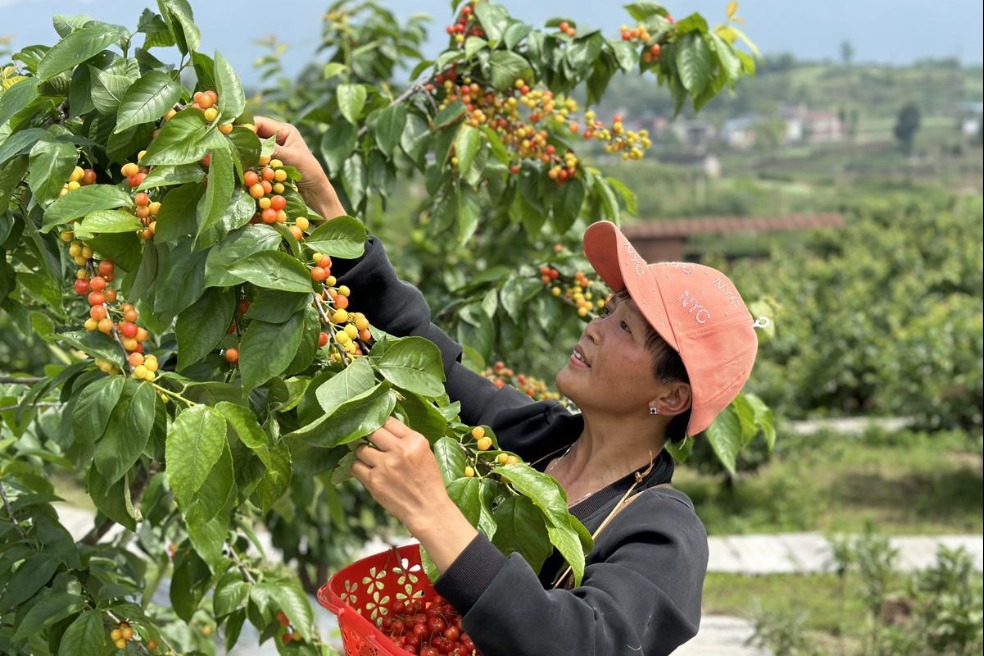Science helps lift counties out of poverty


Poor areas given technical resources to train skilled workers and officials
Scientists from the Chinese Academy of Sciences have helped lift many rural areas out of poverty by supporting the local agricultural industry with advanced science and technology.
By the end of June, the academy had provided scientific assistance in 68 poverty-stricken villages in areas including Huree Banner in the Inner Mongolia autonomous region, Huanjiang Maonan autonomous county in the Guangxi Zhuang autonomous region, and Shuicheng county and Liuzhi special district in Guizhou province. It had helped 101,041 people in 27,966 households out of poverty.
The academy has set up a leading group, headed by the president of CAS, Bai Chunli, to coordinate all the work. Each poverty-stricken county was assigned one responsible research institute that helped introduce resources, scientific results and projects to the county, as well as train local technicians and officials.
"The academy had long made poverty alleviation efforts before, but although the overall GDP in that town or village was raised, it turned out that the increases were owed to those who were capable. Local farmers still lacked basic knowledge and techniques to make wealth," said Yan Qing, director of the science and technology development department of CAS.
He said the key should lie in improving the level of industrialization by better connecting farmers with enterprises.
In 2017, the academy sent teams of about 10 academicians and over 500 experts into rural towns and villages to carry out a comprehensive field survey and propose poverty-alleviation plans. The plans were tailored specifically to the local sectors and products where each area has advantages.
Based on the planning, scientists decided to focus on kiwis, animal husbandry and potatoes after taking into account the local technological needs and each institute's strength.
The potato, for example, is not only an important crop that helps ensure China's food security, it is also the staple food and main source of income for many poor mountain areas, said Zhong Naiqin, a senior engineer from the Institute of Microbiology, a CAS subsidiary.
Zhong and her team of researchers paid a visit to Shuicheng county in Guizhou province, where the cultivated area per capita was about 0.1 hectare. About 40 percent of the population was illiterate, and more than 36 percent were living in poverty.
Potatoes were the main crop in the county but suffered from serious pests and diseases that resulted in low yield, she said.
To solve the problem, Zhong and her team developed new fertilizers that helped crops absorb more nutrients, applied compound fungicide that curbed diseases and cultivated disease-free seed potato tubers.
In 2017, a company specialized in breeding seed potato tubers was set up, supported by technical guidance from the Institute of Microbiology and a local academician workstation. The tubers were then provided to small companies and cooperatives consisting of three to four poor households to extend the plantation.
Zhong said the production in some deeply poor towns and villages has increased by about 70 percent since 2017. The technologies also helped largely increase potato production in the Ningxia Hui autonomous region and Inner Mongolia autonomous region.
"As a national strategic force of science and technology, CAS has acted as the forerunner, practitioner and main force in alleviating poverty by using science and technology," Yan said.
"We will continue to give full play to our scientific strengths and make greater contributions to fighting poverty and implementing the rural revitalization strategy," he added.
- Action taken over Chongqing Gas Group overcharging
- Xi: Crucial role for new PLA force
- Obesity, myopia growing issues among youth
- Shanghai Coffee Culture Festival celebrates local coffee culture
- Developing Cyberspace Force crucial for network protection
- Thunderstorm delays flights at Guangzhou Baiyun International Airport



































